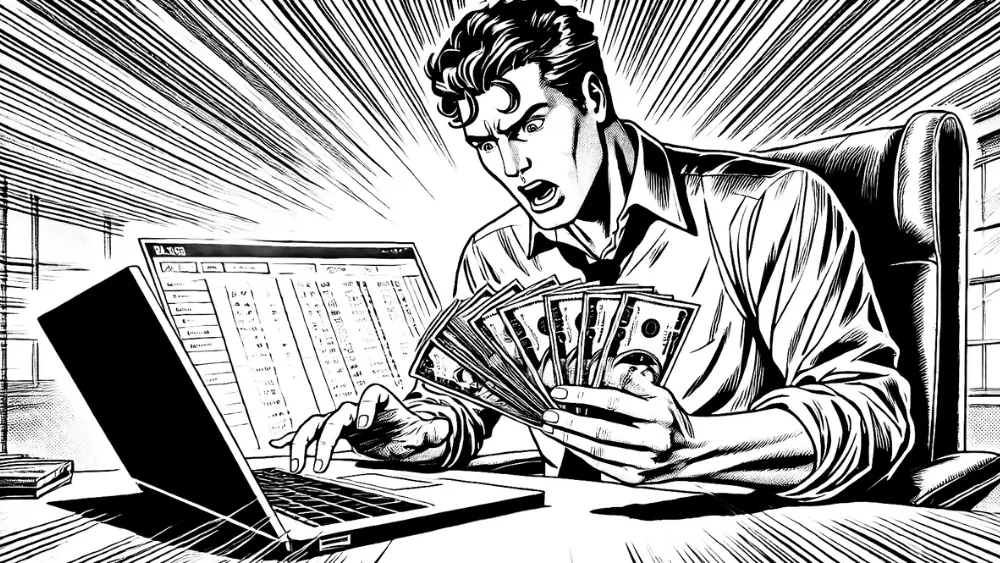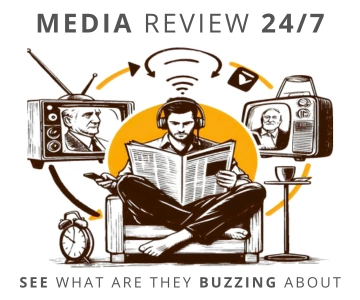 illustration: DALL-E
illustration: DALL-EThe rise in costs is not a temporary anomaly but a long-term trend affecting companies’ marketing strategies worldwide. Several key factors drive the dynamic increase in click prices:
- Increased competition. Digital transformation, accelerated by the pandemic, brought thousands of new advertisers into Google Ads. More firms compete for the same users, driving up auction prices.
- Fewer clicks. Users click ads less often, especially when answers appear directly in search results. The introduction of generative AI in search has further reduced click availability.
- Automation and lack of transparency. The growing role of tools like Performance Max means systems set bids automatically, often raising them in pursuit of predicted conversions. Advertisers lose control over how budgets are used.
How to optimise advertising campaigns?
In response to changing conditions, optimisation efforts are expanding beyond campaigns to the whole customer acquisition process:
- Broader data perspective. Instead of focusing only on CPC, analyse metrics such as cost per lead (CPL), conversion rate (CR), lifetime value (LTV), or return on ad spend (ROAS).
- Raising campaign quality. Better keyword matching, more effective ad copy, and fast, intuitive landing pages help improve quality scores and reduce costs.
- Diversifying marketing channels. Investing in SEO, social media, email marketing, or partnerships reduces reliance on a single advertising ecosystem.
- Using first-party data. Data directly from customers is key for effective remarketing and personalised messaging strategies.
- The rise in CPC in Google Ads is not just about higher costs, but about decreasing control over how these costs arise. Automation, like Performance Max, works as a black box today. We do not know why a specific click cost what it did - says Borys Marushchak, performance marketing manager at Harbingers. - This forces us to think beyond campaign settings. True optimisation now starts on the landing page, in the purchasing process, and in customer service. Focusing on lifetime value (LTV), not just ROAS, is the only way to remain profitable in today’s ecosystem.
Rising Google Ads costs are now part of the changing digital advertising market. Instead of competing only on bids, focus on strategic adaptation, full sales funnel optimisation, better data use, and building long-term customer value. In today’s reality, quality and flexibility, not budget, determine competitive advantage.
source: Harbingers/Biuroprasowe.pl
COMMERCIAL BREAK
New articles in section Marketing and PR
Dance in the media mirror. Between culture, business and viral fame
KFi
Over 78,000 media pieces, 1.6 billion potential views, and 197,500 social media mentions-dance in Poland is no longer niche. With a combined media value exceeding PLN 800 million, it now outperforms MMA, handball, and hockey.
PR in Poland. Ranking of the largest public relations agencies 2025
KFi
The smallest teams often generate the most publications, and agencies outside Warsaw are increasingly capturing media attention. This unexpected distribution of power is one of the key findings from the 2025 PR Agency Ranking in Poland, developed by Widoczni and IMM.
Connected TV and borderless advertising. The ID5 report
KFi
Viewers are moving away from cable TV. And they are doing it en masse. Already 86% of Europeans watch content via Connected TV and global ad spend in this segment is set to double by 2028. The industry is undergoing a communication revolution.
See articles on a similar topic:
A Socially Responsible Company. This Image Pays Off
RINF
Poles and Spaniards are the most likely in Europe to buy from socially responsible companies, according to the Global State of the Consumer Tracker report, developed in late June by Deloitte’s consulting experts.
Polish Digital Advertising Market 2023/2024. IAB Poland Report
Krzysztof Fiedorek
The Strategic Internet Report 2023/2024 prepared by IAB Poland provides a detailed analysis of the Polish digital advertising market, showing its dynamic growth in 2023. The market value reached nearly 7.8 billion PLN, indicating an increase of over 870 million PLN compared to the previous year.
AI will take up to 70% of traffic from online stores. TrustMate Report
KFi
There is a quiet but radical change happening online. Traditional SEO, which for decades determined brand visibility, is losing its relevance. Now, it's no longer search engines that define a company’s online presence, but generative artificial intelligence.
7 facts about media relations. How to work with journalists
Bartłomiej Dwornik
In media relations, every mistake costs you attention. Every cliché wastes inbox space. Even a good and interesting topic might not be enough to break through. The way you present it also matters. Maybe even more than the content itself.





























